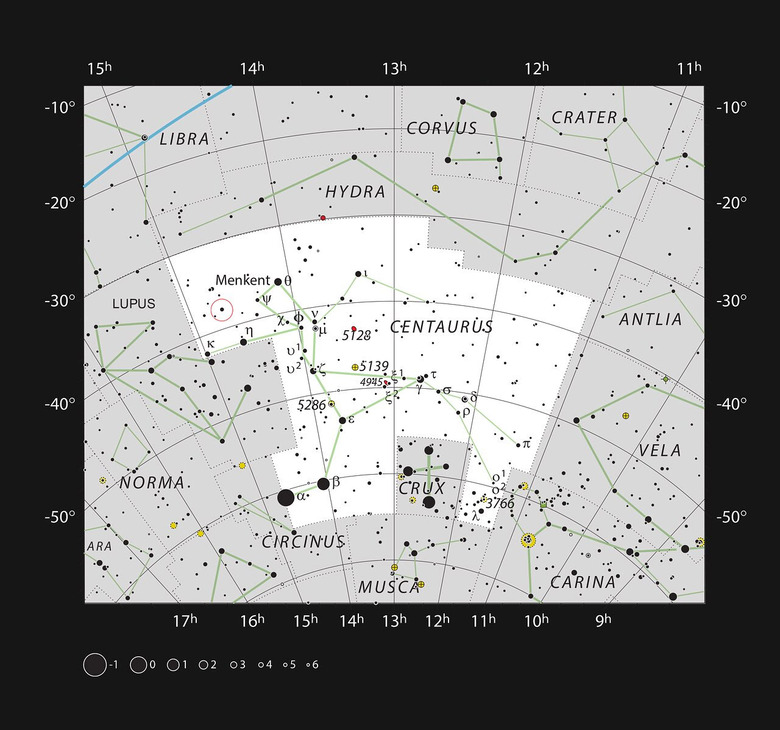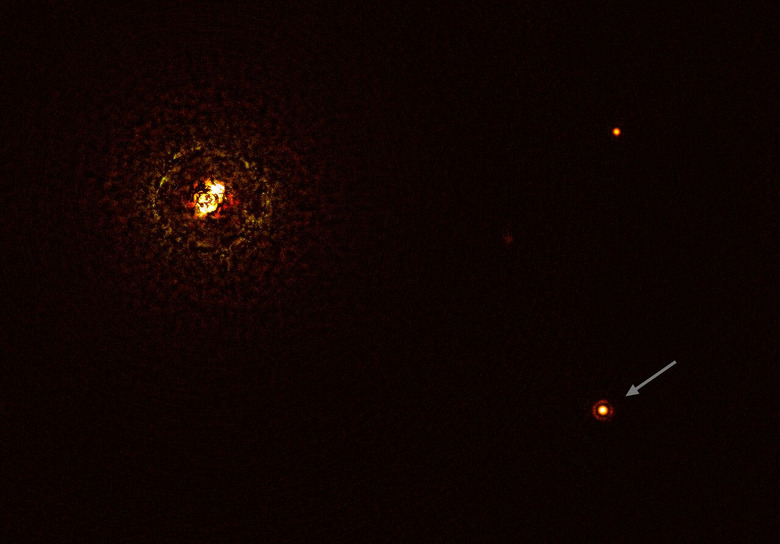ESO VLT Spots Hottest, Largest Planet-Hosting Star System Yet
The European Southern Observatory (ESO) Very Large Telescope (VLT) has been searching the heavens for exoplanets, stars, and black holes for a very long time. Recently, the VLT was used to image a planet orbiting a binary star system called b Centauri (via ESO). One of the more interesting aspects of the b Centauri system is that it can be seen with the naked eye. Another interesting aspect of the b Centauri system is that it's the hottest and most massive planet-hosting star system so far.
The exoplanet orbiting the binary system circles its stars at a distance 100 times further away than Jupiter orbits the sun. Until discovering this exoplanet, some astronomers believed planets couldn't exist around stars as massive as the b Centauri pair. Speaking with the ESO (linked above), Astronomer Marcus Janson from Stockholm University, Sweden, says that discovering a planet around b Centauri is very exciting because it completely changes opinions about massive stars as planet hosts.
The star system b Centauri is in the constellation Centaurus about 325 light-years away from Earth. The binary system is at least six times as massive as the sun, making it by far the most massive star system to host a confirmed planet. The discovery marks the first time a planet has been discovered orbiting a star system any more than three times as massive as the sun. The exoplanet in the system is called b Centauri(AB) or Centauri b for short.

Massive star systems don't typically have planets because large stars are very hot, causing material around the star to evaporate quickly. The main star in a binary system such as we're seeing here is a B-type star, a star with a surface three times hotter than our Sun.
Since the star produces so much heat, it also emits lots of ultraviolet and x-ray radiation. Massive stars such as this would strongly impact the gas that surrounds them, which scientists believe would work against planetary formation. Despite that belief, the planet orbiting the stars has been confirmed.
Janson says that since B-type stars have destructive and dangerous environments around them, it was believed that it would be difficult for large planets to form around them. The discovery of Centauri b shows that planets can form around B-type stars despite the harsh environment. The environment of the planet orbiting the stars would be nothing like the environment here on Earth, as Centauri b exists in an extremely hostile environment with extreme radiation.

Centauri b is ten times more massive than Jupiter, making it one of the largest exoplanets ever discovered. It orbits its host stars at a distance 100 times greater than Jupiter orbits the sun making it one of the widest orbits ever discovered. Astronomers believe it's the vast distance from the host stars that it orbits that allowed the planet to exist at all.
Discovering the planet was possible thanks to the SPHERE (Spectro-Polarimetric High-contrast Exoplanet Research) instrument aboard the ESO VLT in Chile. In the case of Centauri b, SPHERE was critical in identifying the planet but wasn't the first instrument to observe it. During their study, the team of astronomers looked into data from the archives on Centauri b and found the planet was imaged more than two decades ago using the ESO 3.6-meter telescope. At that time, Centauri b wasn't recognized as a planet.
ESO astronomers are looking forward to utilizing the new Extremely Large Telescope (ESO) that will begin observations later in the decade, as well as upgrades to the VLT to help them make new discoveries. Those instruments will allow astronomers to learn more about how Centauri b formed and its features. Exactly how the planet formed remains a mystery.
Another recent VLT discovery
Astronomers at the ESO are always busy conducting research and exploring the universe around us using the VLT. In November, astronomers used the VLT to discover a black hole lurking inside a distant star cluster. The black hole was found surrounded by thousands of stars approximately 160,000 light-years from Earth.
The star cluster is called NGC 1850 and resides with the Large Magellanic Cloud. In the search for the black hole, astronomers looked for evidence of its presence without directly observing it. Instead, the team investigated how the black hole influenced nearby stars. They hope the technique can be used to discover other distant black holes in the future.
The black hole is 11 times more massive than the sun and was pinpointed using its gravitational influence on the star orbiting it. That star is about five times as massive as the sun. Usually, black holes are discovered by detecting the X-rays emitted as matter is consumed.
Black holes can also be discovered using gravitational waves generated as two such bodies collide or as a one collides with a neutron star. Another item of note in this particular discovery is that this is the first time a black hole has been discovered within a young cluster of stars. As with most things on a cosmic scale, young is relative, as the cluster is believed to be about 100 million years old.
